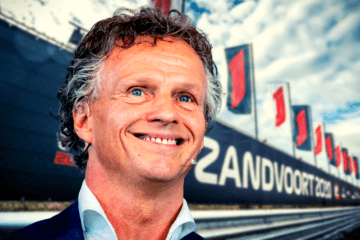Why Daniel Ricciardo passed up the chance to join Ferrari
At first glance, Daniel Ricciardo’s new multi-year contract with McLaren, coming just 21 races after he switched from Red Bull Racing to Renault at the beginning of 2019, looks like a step sideways.
But if the 30-year-old is ever to achieve his goal of becoming Formula One world champion, it’s a move that at least makes that possible. Ricciardo’s other options at Ferrari or Renault were either dead ends, or roads to nowhere.
In F1’s 70-year history, only Ferrari (16 constructors’ titles) and Williams (nine) have enjoyed more success than McLaren (eight), while the likes of Lewis Hamilton, Ayrton Senna and Alain Prost have stood atop the world in McLaren machinery.
Hamilton’s 2008 success is McLaren’s most recent, but under the stewardship of CEO Zak Brown and new team principal Andreas Seidl, the team improved dramatically to fourth place in 2019. That rapid rate of progress, allied to changes in the pipeline for 2021, will give Ricciardo optimism that his dream is still achievable as he starts his second decade in the sport.
That Ferrari elected to replace the outgoing Sebastian Vettel with 25-year-old Spaniard Carlos Sainz is little surprise, given their penchant for backing one driver to attack the world championship, and using the other to play dutiful rear-gunner.
Michael Schumacher’s five-year red reign as world champion from 2000-04 featured Brazilians Rubens Barrichello and Felipe Massa as team-oriented wingmen, drivers capable of winning occasional races, but never given the internal support for a genuine championship challenge.
Ferrari’s most recent world title, in 2007, came after Massa sacrificed the lead at the final race of the season to allow team leader Kimi Raikkonen steal the crown from warring McLaren teammates Hamilton and Fernando Alonso. It’s an approach that hasn’t worked since, but one the Italian team remains stubbornly committed to, and one Ricciardo was overqualified for.
The ascension of 22-year-old Charles Leclerc at Ferrari last year, and a lucrative post-season contract extension until the end of 2024, saw Vettel consigned to a second-fiddle role had he re-signed for 2021, necessitating a significant pay cut and acceptance of the fact he was no longer the apple of Ferrari’s eye. That Ferrari pounced on Sainz, who has just one podium finish in 102 career races, only confirms that all eggs are now in the Leclerc basket.
With seven victories and 29 podiums, Ricciardo was a square peg that was never going to fit into the round hole Ferrari wanted its second driver to slot into after Vettel’s exit. It was only four years ago that Ricciardo finished third in the championship for a second time; to expect a driver of his pedigree and market value to ride shotgun for Leclerc was little more than a romantic thought for fans linking the Australian with an Italian background to a team that hasn’t employed an Italian driver full-time since 1992.
Ricciardo’s switch to McLaren, who he had meetings with in 2018 before ultimately deciding on Renault, will coincide with the team starting an engine supply deal with Mercedes from 2021.
The McLaren-Mercedes axis has a glorious past; the combination won 78 races and three titles between 1995-2014, while Mercedes engines have dominated for the past six years since F1 switched to V6 turbo hybrid power plants.
McLaren, using Renault customer engines, leapfrogged Ricciardo’s parent team into fourth place in the constructors’ championship last season, and is undoubtedly on the up. That Ricciardo was willing to sign with the British squad less than two years after rejecting their overtures shows how far McLaren has come, and how much potential a potent McLaren-Mercedes-Ricciardo package has.
It’s a move that is unlikely to pay immediate dividends in 2021 for Ricciardo, with McLaren’s momentum temporarily halted by the coronavirus-delayed start to the 2020 season.
But as the post-pandemic F1 adjusts to a new normal that includes regulations being frozen for two seasons and a cost cap that could slash the budgets of some teams by as much as 50 per cent, Ricciardo has managed to manoeuvre himself to a team that seems to be on an inexorable march back to where they spent a large part of their past, and one where he’ll have a chance to compete for results on equal footing to his teammate, British youngster Lando Norris.
source: theage.com.au


